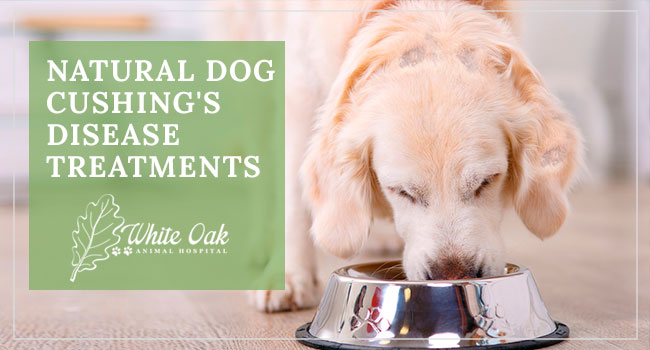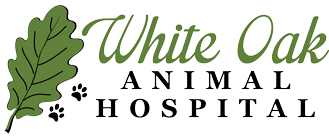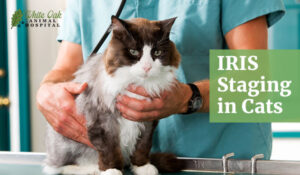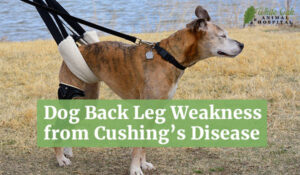
Natural dog Cushing’s disease treatments are easy to use and often very successful.
It’s pretty easy to spot dogs suffering from Cushing’s disease.
They appear hungry and thirsty all the time.
Cushing’s dogs usually have a potbelly, and often start losing their hair.
Symptoms include:
- Accidents at night
- Bruising
- Fat pads on neck and back
- Fatigue
- Hair loss
- Excessive hunger
- Increased thirst
- Constant panting
- Increased urination
- Infertility
- Muscle weakness
- Pot-bellied abdomen
- Skin darkening
- Skin thinning
- White scaly skin patches.
The changes are usually gradual, but escalate until your dog is very uncomfortable.
At this stage, pet parents realize something is wrong and make a trip to the veterinarian.
What is Canine Cushing’s Disease?
Cushing’s disease is a debilitating disease, usually affecting geriatric dogs.
Hyperadrenocorticism is the formal name for Cushing’s.
Cushing’s happens due to a malfunction in the endocrine system.
Dogs have two small glands sitting on top of their kidneys, called adrenal glands.
The adrenals produce and store cortisol.
As mentioned earlier, cortisol is the main culprit in Cushing’s disease.
So, we know something is happening with your dog’s adrenals and cortisol hormone.
Now we need to figure out which type of Cushing’s disease your dog has.
Dogs suffer from one of two types of Cushing’s disease:
- Pituitary-dependent Cushing’s
- Adrenal-dependent Cushing’s.
Pituitary-Dependent Cushing’s Disease
According to the FDA, roughly 80 to 85 percent of dog Cushing’s is pituitary-dependent.
In other words, it’s triggered by a tumor on the pituitary gland.
Your dog’s pituitary gland is a little pea-sized gland situated at the base of the brain.
The pituitary secretes several hormones, including adrenocorticotropic hormone (ACTH).
In pituitary-dependent Cushing’s the pituitary gland secretes too much ACTH.
Then, ACTH travels via the bloodstream to the adrenal glands.
Subsequently, the excess ACTH triggers the adrenal glands to produce excess cortisol.
Adrenal-Dependent Cushing’s Disease
In contrast, Adrenal-dependent Cushing’s is a little different. It involves a tumor.
The dog has a tumor in one or both adrenal glands, and the tumor produces the excess cortisol.
Unfortunately, there is no cure for Cushing’s disease.
But, with treatment, dogs with Cushing’s disease can still live long, happy lives.
Testing for Cushing’s Disease
Most veterinarians use blood tests to diagnose Cushing’s.
Blood tests also help veterinarians determine whether the disease is pituitary-dependent or adrenal-dependent.
In addition, your vet might also perform an ultrasound to look for a tumor on the adrenal gland.
Some veterinarians perform less testing and treat by observing symptoms.
Many holistic vets recommend trying something natural as a first round of treatment.
Often, natural treatments work and the dog never needs medication.
Other dogs do well with natural treatments for years. But, they need more aggressive (medical) treatment as they age.
Every dog is a little different.
Herbs and Supplements for Cushing’s Disease
Melatonin and Lignans
One of our top choices for natural Cushing’s treatment is a combination of melatonin and lignans.
Melatonin
Melatonin is a hormone produced by the pineal gland.
It’s available in supplement form at most drugstores or health food stores.
Melatonin helps dogs suffering from Cushing’s disease in several different ways:
- Regulates hormones
- Maintains the body’s circadian rhythm
- Provides antioxidant benefits.
In addition, melatonin is a natural treatment for fur loss in dogs, cats, and ferrets.
Researchers aren’t quite sure how melatonin helps fur regrowth.
Some scientists think regrowth is due to the relationship between the body’s circadian rhythm, melatonin, and sunlight.
Other researchers theorize melatonin’s antioxidant properties help promote hair growth.
Melatonin also helps Cushing’s disease by inhibiting certain enzymes.
A general guideline for dosing melatonin is:
- Dogs under 10 lbs – 1 mg of melatonin every 12 hours (also for those who want to give their dogs very low doses of melatonin)
- Dogs under 30 lbs – 3 mg of melatonin every 12 hours
- Dogs over 30 lbs – 6 mg of melatonin every 12 hours
- Note: Research recommends not exceeding a melatonin dosage of 3 to 6 mg every 8 to 12 hours.
- Note: Make sure you read the label and give your dog supplements containing melatonin only. Colorings and additives may be toxic to your dog.
Note: If melatonin makes your dog excessively sleepy, give melatonin only at night.
Lignans
There are two main types of lignans on the market:
- SDG (secoisolariciresinol diglucoside) lignans
- HMR (7-hydroxymatairesinol) lignans.
SDG lignans are flax hull extracts. HMR lignans are Norwegian spruce tree extracts.
We recommend HMR lignans over SDG lignans.
Dogs absorb HMR lignans faster and more completely than SDG lignans.
When ingested, the intestinal bacteria act on plant lignans, converting them to enterolactone.
With HMR lignans, the conversion is immediate upon ingestion. With flax hull lignans, the process is slower and incomplete.
Enterolactone behaves phytoestrogen in the body.
The phytoestrogen behavior causes downregulation of estrogen production from the adrenal gland.
Estrogen downregulation is helpful for dogs suffering from Cushing’s disease.
According to the University of Tennessee College of Veterinary Medicine, recommended supplementation is:
- Dogs under 25 lbs: 10 mg daily
- Medium to Large dogs 20 mg – 30 mg daily
- For dogs over 100 lbs, 40 mg daily.
Note: Make sure you read the label and give your dog supplements containing lignans only. Colorings and additives may be toxic to your dog.
Ophiopogon Formula
Ophiopogon Formula is a TCVM (Traditional Chinese Veterinary Medicine) herbal blend of 12 different herbs.
According to TCVM principles, the herbs treat underlying imbalances causing Cushing’s disease.
The herbs balance the dog’s subtle energy by:
- Nourishing Yin
- Clearing Heat
- Promoting body fluids.
Opiopogon formula rebalances your dog’s subtle energy, alleviating Cushing’s symptoms.
Because it is a TCVM herbal formula, you must get prior authorization from your veterinarian to purchase Ophiopogon Formula.
Rehmannia 14
Rehmannia 14 is another TCVM herbal blend used to help dogs with Cushing’s disease.
Like Opiopogon formula, Rehmannia contains many herbs-fourteen to be exact.
Similarly, it works on underlying imbalances by:
- Nourishing Yin
- Tonifying Qi
- Tonifying Yang.
Rehmannia 14 works a little differently than Ophiopogon powder.
But, it still has the same end result.
The herbs work at the root cause, rebalancing your dog and easing Cushing’s disease symptoms.
Just like Ophiopogon Formula, you must get prior authorization from your veterinarian to purchase Rehmannia 14.
Food for Dogs With Cushing’s Disease
About Hyperlipidemia
Dogs with Cushing’s disease often suffer from hyperlipidemia.
Hyperlipidemia means your dog has too much circulating much fat in its blood.
Your veterinarian will easily spot hyperlipidemia on a routine bloodwork panel.
Initial treatment of primary hyperlipidemia involves a switch to a low-fat diet (<25 g/1000 kcal) with moderate protein content (generally greater than 18%, or 60 g protein/1000 kcal).
You can find commercial low-fat canine diets at most pet stores.
Make sure to choose a diet that is low in fat based on metabolizable energy (ME), and not strictly on the percent fat present in the diet.
Home Cook for Your Dog
On the other hand, cooking for your dog is the most proactive way to help your dog’s diet.
As you might already know, Dr. Damron is certified in TCVM (Traditional Chinese Veterinary Medicine) for animals.
One of his TCVM specialties is Eastern Food Therapy for Pets.
Dr. Damron is a co-founder of PET | TAO Holistic Pet Products, a company combining Eastern food therapy with Western nutritional science in food, treats, and supplements.
PET | TAO also teaches people how to cook at home for their pets.
You can take your dog’s diet to the next level by feeding an energetically appropriate diet. It’s really easy!
Just take a look at PET | TAO’s easy-to-use feeding chart.
Review all columns and make note of the column with most of the issues your dog experiences.
The food listed is what will bring your dog into or keep your dog energetically balanced.
Once you know what type of food your dog needs, choose the appropriate recipe from PET | TAO’s recipe list.
The recipes include lists of foods energetically appropriate for your dog.
You’ll also find a slow cooker recipe example to use as a guide when you create your own concoctions.
Remember to Cut the Fat
Remember, because of hyperlipidemia, your goal is lowering the amount of circulating fats in the blood.
The best way to lower the circulating fats is to keep the fat in your dog’s diet below 16%.
So, adjust the recipe, choosing foods your dog loves but keeping the fat total at 16% fat or less.
If you have trouble doing the math, you can use a nutrient counter like what’s available on Livestrong or FitBit websites.
That being said, be careful what treats you feed a dog with Cushing’s disease. Treats can ruin any diet!
We recommend freeze-dried organ meats for dogs suffering from Cushing’s disease because they are naturally low in fat.
Final Thoughts on Natural Dog Cushing’s Disease Treatments
A few simple changes at home will go a long way towards making your dog feel better.
Try combining:
- Supplements
- Herbs
- Food therapy
- Plenty of water
- Appropriate exercise
You’ll be surprised at how your dog starts acting like his normal self.
He’ll have more energy and seem happier.
His thinning fur will thicken and soften.
And, you’ll both have a better outlook on life.
Other Powerful Tools for Cushing’s Disease Health Challenges
There are many quick and easy changes you can make at home to help you give your dog an edge on easing Cushing’s disease challenges.
- Learn more about Cushing’s Disease.
- Try Home Cooking. Visit our Recipe Page, and scroll down to the recipes for dogs with Cushing’s disease. Often, home-cooking makes a huge difference in helping dogs feel better!
- Supplement with medicinal mushrooms. PET | TAO Complement Immune Mushroom Blend eases inflammatory response and immune system stress caused by Cushing’s.
- Try digestive enzymes and probiotics. PET | TAO Harmonize GI boosts gut health, which in turn, helps your dog better process all food nutrients. Improved gut health also boosts immunity and calms allergic response.
- Feed PET | TAO Freeze Dried Lung Treats According to TCVM, when Cushing’s disease is present there is almost always Liver Meridian involvement. Liver treats provide Liver Meridian support as a glandular supplement (Western theory) and via 5-Element Theory (Eastern theory).
- Learn more about TCVM Herbal Remedies. Chinese medicine offers many amazing natural solutions for Cushing’s disease. A good example is:
Related Posts
-
What Are the Best Herbs for Arthritis in Dogs?
Herbs for Arthritis Will Help Your Dog Feel Better Arthritis hurts! And, dogs feel pain…
-
What You Should Know About Heartworms and Heartworm Disease
Testing for Heartworms Year after year, you take your pet to his yearly check-up with…
-
A Must-Try Herbal Remedy for Dog Eczema and Dermatitis
Dog Eczema and Dermatitis Explained In a nutshell, dog eczema and dermatitis are itchy skin…
-
When Should I Spay or Neuter My Pet?
Should I Spay or Neuter My Pet? For many years, veterinarians recommended clients spay or…









